Hook, Line, and Trailer: 13 Best Tips for Buying a Used Boat Trailer
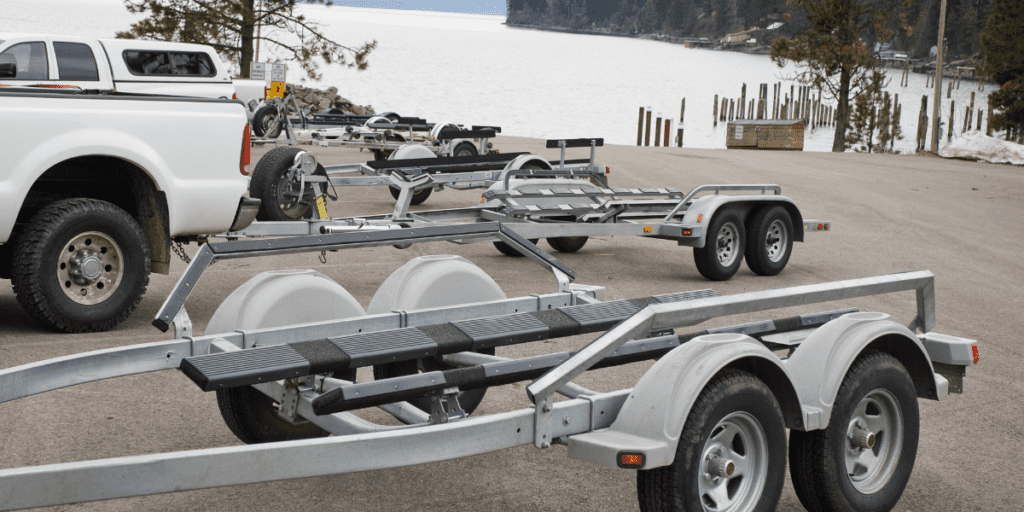
Looking to invest in a used boat trailer without breaking the bank? Don’t worry, by following this blog post, tips for buying a used boat trailer, you will be ready to make an informed purchase.
Our comprehensive guide covers all the bases, from the different types of trailers available to important factors to consider when purchasing second-hand, and top maintenance tips.
So if you want to navigate the used boat trailer market with confidence, read on – we’ve got you covered.
Table of Contents
3 Types of Boat Trailers
As an avid boater, we know that choosing the right trailer for your beloved vessel is of utmost importance. With varying sizes and weights of boats, it becomes essential to select the perfect trailer to meet your individualized boat needs.
The most popular boat trailer styles are the single-axle, the dual-axle, and the multi-axle. Let’s look at each of these options to determine which one will give you what you need for your boat plus the ultimate peace of mind and confidence for safely transporting your boat.
Single-axle Trailers
Transporting your smaller watercraft has never been easier with a lightweight and maneuverable single-axle trailer. Perfect for kayaks and canoes, this affordable option can make your nautical adventures a breeze.
While a single-axle trailer is not the best choice for longer hauls or heavier boats, it is a good option for those who are newer to trailering a boat and don’t have a long distance to travel to the water.
Don’t let transportation logistics hold you back from enjoying your next journey. Consider a single-axle trailer for your smaller vessel and hit the water with ease.
Dual-axle Trailers
Looking to transport your larger boat with ease and peace of mind? A dual-axle trailer is your answer. It provides increased stability, and it can handle heavier loads while offering a smoother ride.
Although it may come at a higher cost, the investment is worth it for longer hauls. Say goodbye to wobbling and uneven weight distribution and hello to a secure transportation experience.
Multi-axle Trailers
Serious boaters understand the importance of transporting their larger boats over long distances safely and efficiently. That’s where multi-axle trailers come into play.
With a design that includes three or more sets of wheels, these trailers offer extra stability and can carry heavier loads. Plus, advanced braking systems ensure superior performance.
While they may come at a higher price point and require some skill to handle, multi-axle trailers are an investment that serious boaters won’t regret.
Below is a handy guide to help sort things out easily about boat trailers.

4 Factors To Consider When Buying a Used Boat Trailer
Purchasing a pre-loved boat trailer can be a wise financial decision, but it’s important to tread cautiously.
Before you dive into the world of used trailer ads, we suggest creating a list of your requirements and desires.
This will save you valuable time by narrowing down the options and ensuring you only consider trailers that truly match your unique needs. Remember, an informed buyer is a happy buyer!
1. Size of the Trailer
When it comes to purchasing a pre-owned boat trailer, size matters! It’s important to find one that will accommodate your boat without making it difficult to navigate.
You can easily check the trailer’s dimensions to ensure it’s a perfect match for your vessel or reach out to the seller for guidance. With the right-sized trailer, your boating adventures will be smooth sailing!
2. Boat Weight
The next important factor to consider is the weight of your boat. Make sure that the trailer’s weight capacity is sufficient to carry your boat, including any gear or accessories.
It’s essential to keep in mind the trailer’s limits since overloading it can result in significant damage to both the trailer and the boat.
3. Materials
The material used to make the trailer determines its durability, weight, and cost.
Steel is the most common material used for trailer frames. A used trailer with a steel frame will be hard-wearing and can carry a considerable amount of weight but they are prone to rust if not cared for properly.
Aluminum trailers are lightweight and resistant to rust, but they are more expensive.
Galvanized steel trailers are also resistant to rust and can be a good alternative to aluminum trailers.
4. Brake Type
The brake type of the trailer is another factor to consider when buying used boat trailers.
There are two types of brake systems: surge brakes and electric brakes. Surge brakes are activated through the act of pushing the trailer forward, while electric brakes are applied through an electrical connection.
Electric brakes are more efficient and have better-stopping power, making them a popular choice.
By creating a needs and wants list in advance you can save yourself time by only looking at the trailers that will work best for you and your boat’s needs.
9 Tips for Inspecting Used Trailers
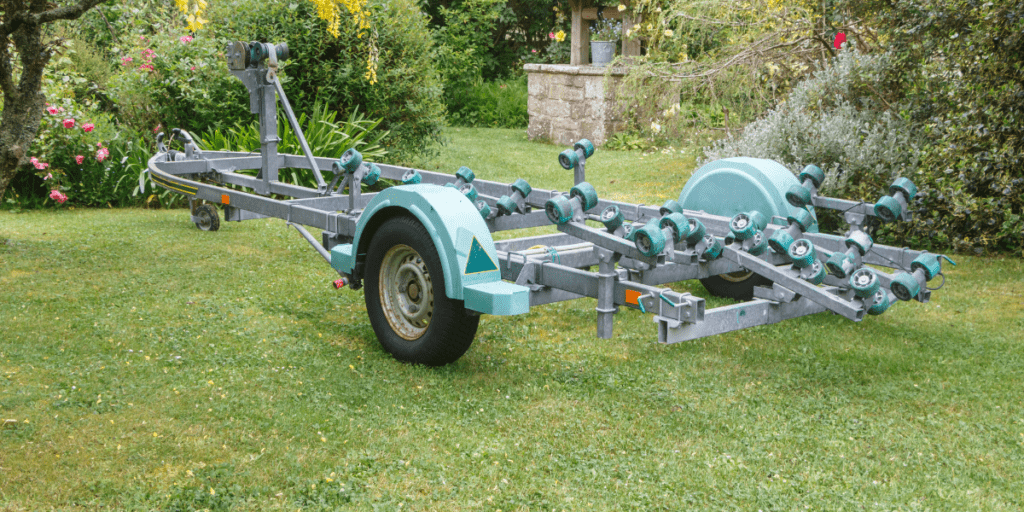
Investing in a sturdy and dependable used trailer for your aquatic adventures is a financial decision that will not disappoint, and this is particularly true when you’re eyeing a used one.
When buying a used trailer it’s important to conduct a careful inspection before handing your money over. You want to ensure that you’re not only acquiring a valuable asset but also a safe and roadworthy one.
By taking your time and checking everything from the trailer tires to the gross capacity of the trailer frame, you’ll be more likely to sail smoothly into your next boating adventure.
1. Check the Wiring System & Brake Lights
The wiring system of the trailer is an important aspect to inspect before buying.
Check the lights- ensure they are operational by connecting the trailer to a car that can be driven forward and backward to test brakes, indicators, and signal lights.
2. Inspect the Frame

The frame of the trailer should be inspected as well. Visually check the frame for damage including rust or corrosion, which could indicate wear and tear from salty water exposure.
Check any welds to see if there are any serious faults present that would cause unnecessary stress on the trailer while in use.
3. Check Suspension Components
Pay close attention to the suspension components, such as the leaf springs and axle arms. These parts are essential for ensuring a smooth ride and safe transport of your boat.
Look for any signs of excessive wear and tear, such as cracks at the welds or flexing points, rust, bowing, or bending. Also, make sure the springs are still providing adequate support and that the axle arms are straight and aligned properly.
4. Tires and Wheels
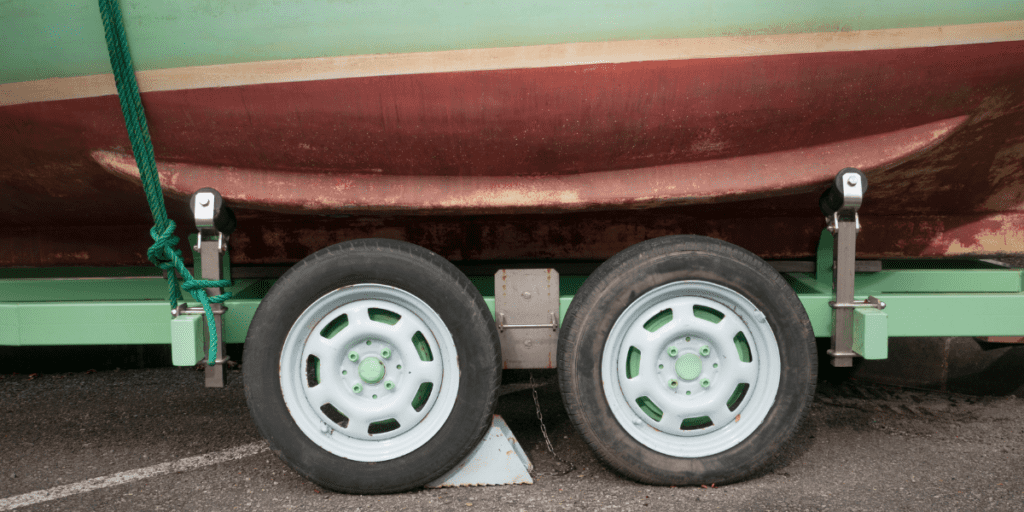
Tires and wheels are essential components of any trailer. Check the condition of the trailer tires for any signs of wear and tear, bulges, punctures, disparities in pressure between the tires, and age. Ensure the rims are rust-free and in good condition.
5. Check Trailer Brakes
Checking the brakes is vital as they are responsible for providing additional stopping power while towing. Check the brake system’s operation and ensure there is no significant rust and wear, including the components such as brake pads, shoes, and rotors. Test them out yourself if possible.
6. Test the Winch
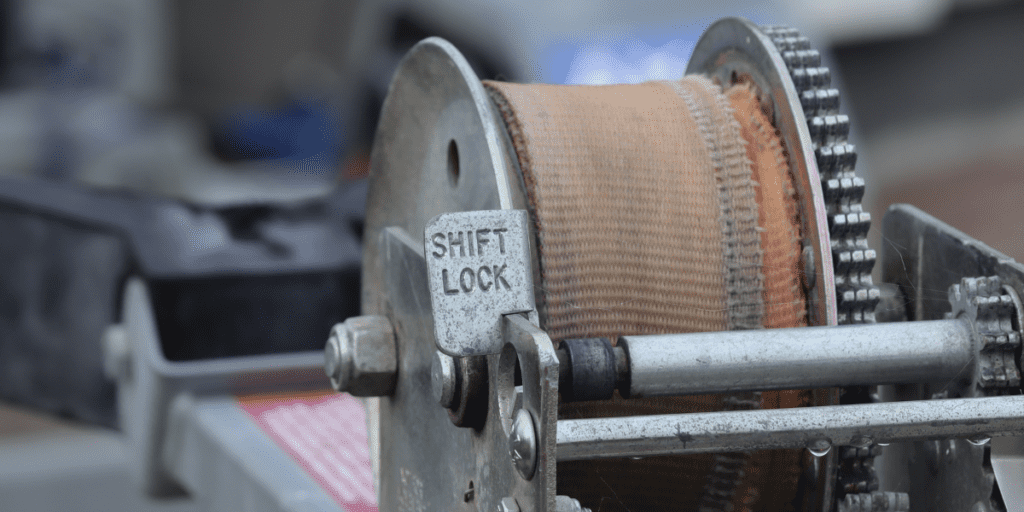
The winch is what you’ll use to pull your boat onto the trailer, so it must be in good working order. Make sure that it turns smoothly and that the cable is free of kinks or wear.
7. Observe the Coupler
The trailer’s coupler must be checked to ensure that the mechanism that holds onto the tow ball is still functioning correctly. You don’t want to worry about your trailer coming off its coupling in the middle of the road. Ensure it is still latching on tightly and smoothly.
8. Examine the Rollers and Bunks
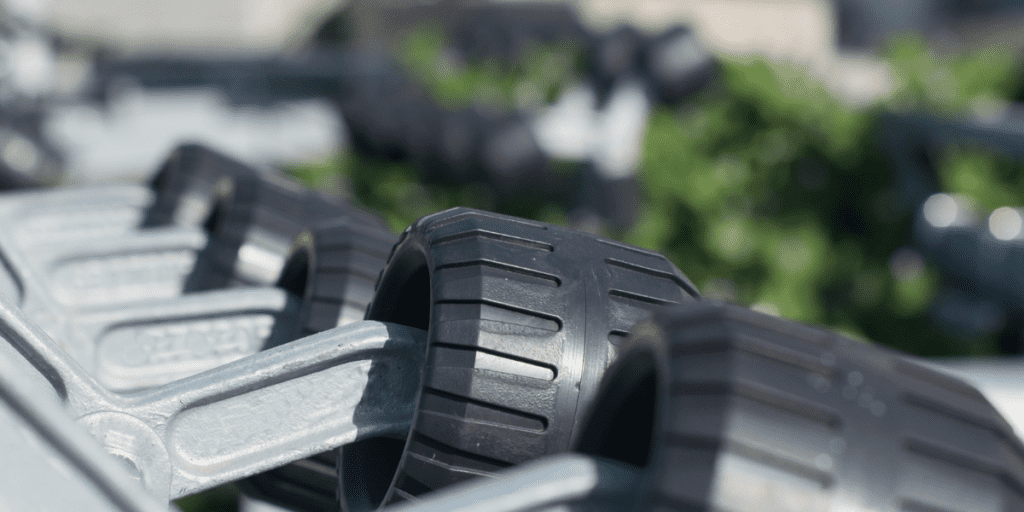
The rollers and bunks are what support your boat as it’s being transported. If they’re in poor condition, it can lead to damage to your vessel – or even to it falling off the trailer entirely.
Check each roller and bunk individually, you are looking for signs of cracking, rotting, or other damage.
You’ll also want to make sure that all of the rollers and the bunks are properly aligned with one another and spaced properly to provide as much support as possible for your boat during transport.
9. Ask for Documentation
Finally, it’s always a good idea to ask the seller for any ownership paperwork they have on the trailer’s history. This might include maintenance records, registration papers, or even the original purchase receipt.
It’s essential to check the vehicle identification plate which is usually located on the tongue of the trailer. By checking the vehicle identification plate information through an online service, you can discover any accidents the trailer has been involved in that required extensive repairs.
The more information you can gather about the trailer, the better. I know someone who purchased a trailer without asking the owner for any documentation and they were not able to register the trailer with DMV because it was stolen. Not a happy circumstance!
Remember by doing a thorough inspection of the trailer and all of its components, and checking the owner’s full documentation you’ll be able to ensure that you’re buying a trustworthy, secure, and roadworthy trailer that meets your needs and the needs of your boat.
Maintenance Of Boat Trailers
Owning a trailer requires maintenance to ensure it’s in good condition for long-term use and ready to hit the water when you are. Here are some suggestions for keeping your trailer in top shape.

By following these simple steps, you can keep your boat trailer functioning properly over time.
Wrapping Up Tips for Buying a Used Boat Trailer
When you’re purchasing a previously owned trailer, be sure to inspect it thoroughly before signing on the dotted line, and remember that the cheapest trailer is not always the best trailer.
By keeping the above tips in mind, you’ll have no trouble finding the right trailer to fit your boats needs!
FAQ’s
Where do I find the Vehicle Identification Number on a trailer?
The vehicle identification number (VIN) is usually located on the tongue of the trailer.
What is the best way to check the trailer lights?
The best way to check the trailer lights is to use a separate tester or ask a friend to watch while you walk around the trailer, activating them one by one.
What is the best type of tow vehicle for pulling a trailer?
The best type of tow vehicle for pulling a trailer ALWAYS depends on the size and weight of the trailer, as well as its intended use. Generally speaking, pickup trucks or SUVs are ideal for towing lighter trailers, while heavier-duty and commercial vehicles may be required for larger trailers.
What are suggested highway speeds when towing a trailer?
It is generally suggested to tow trailers between 55 and 65 mph on highways. However, slower speeds may be required depending on the load, road conditions, etc. It’s important to always obey posted speed limits and drive at a sensible speed for your particular situation.
What is the capacity plate and where do I find it?
The capacity plate is a metal label that provides the maximum load and weight capacity of the trailer. It is usually located on the back side, near the hitch.
